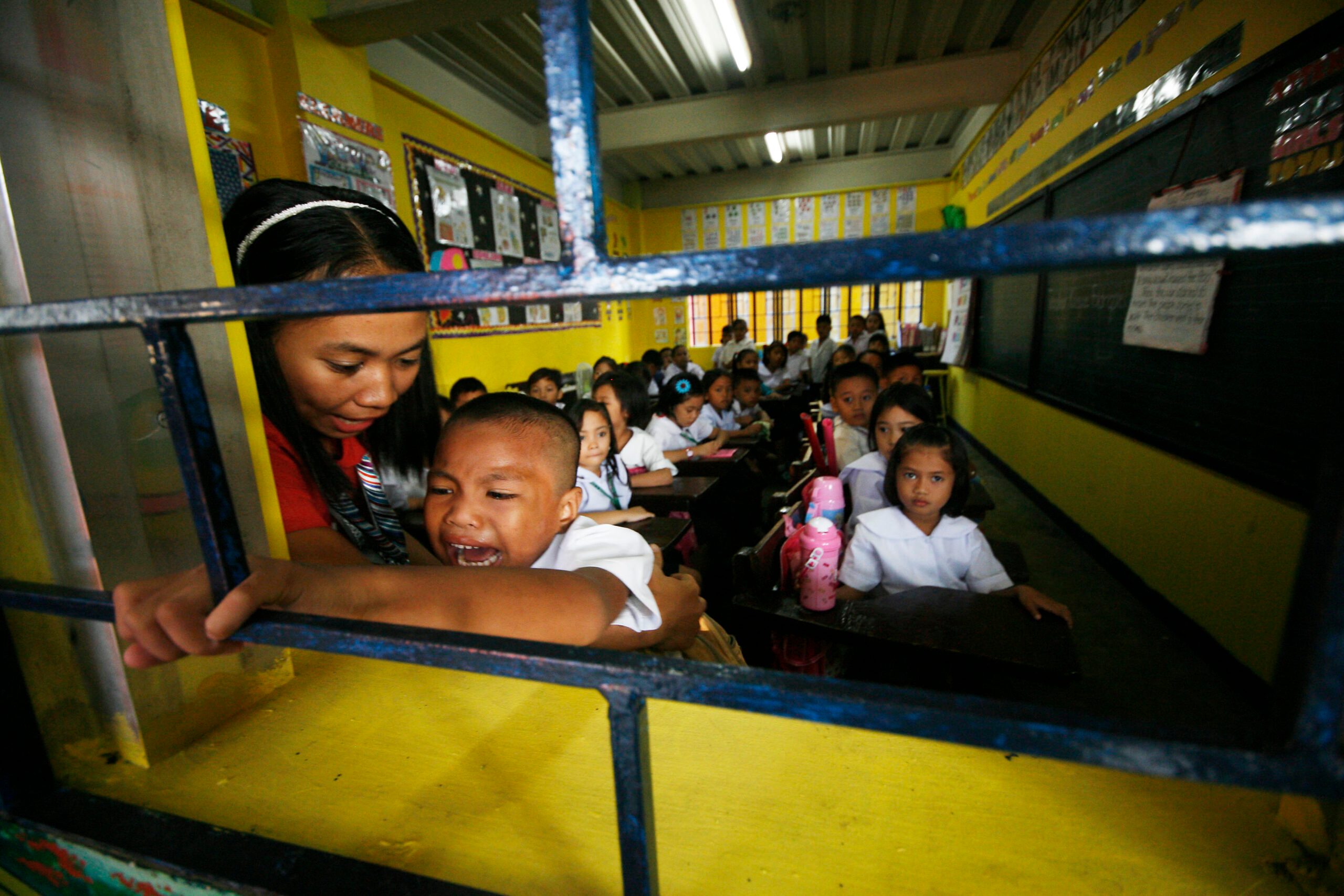SUMMARY
This is AI generated summarization, which may have errors. For context, always refer to the full article.

MANILA, Philippines – A new school year begins Monday, June 1, as public schools open for 21 million elementary and high school students nationwide.
Students who are headed back to school on Monday are all under the K to 12 program, since the last batch of students under the previous 10-year pre-university cycle graduated last March.
The total enrollment in public schools for school year 2014-2015 was at 21,042,250. For school year 2015-2016, the Department of Education (DepEd) expects about 180,000 to 200,000 more students on top of last year’s enrollment.
To date, there are 46,624 public schools and half a million classrooms nationwide. A week before class opening, however, 5 public schools were on the limelight as they have buildings transected by the West Valley Fault:
- Barangka National High School (Marikina)
- Buli Elementary School (Muntinlupa)
- Alabang Elementary School (Muntinlupa)
- Pedro E. Diaz High School (Muntinlupa)
- Karahume Elementary School (Bulacan)
Until engineers are done confirming and validating the structural integrity of select buildings in the said schools, those buildings will not be used for classes.
All of the schools will still open on Monday, except for Buli Elementary School which will open June 8.
Old woes
DepEd said it’s all systems go for the opening of classes, but Education Assistant Secretary Jesus Mateo earlier admitted that late registration of students is still a challenge for the department.
This may result to school congestion in urban areas like Metro Manila, where the problem is common.
But if the downward trend on congestion continues, this school year may see less schools employing double to triple shifts:
| Reduction in number of congested schools | ||||
| ELEMENTARY | 2011 | 2012 | 2013 | 2014 |
| 1-SHIFT | 30,326 | 37,575 | 37,434 | 37,487 |
| 2-SHIFT | 7,638 | 1,001 | 1,203 | 1,146 |
| 3-SHIFT | 461 | 83 | 52 | 15 |
| 4-SHIFT | 81 | 3 | 0 | 0 |
| HIGH SCHOOL | 2011 | 2012 | 2013 | 2014 |
| 1-SHIFT | 6,676 | 7,311 | 7,333 | 7,459 |
| 2-SHIFT | 446 | 421 | 569 | 512 |
| 3-SHIFT | 53 | 17 | 15 | 4 |
| 4-SHIFT | 296 | 2 | 0 | 0 |
Source: DepEd
Below are the standard class sizes in kindergarten, grades 1 to 2, and grades 3 to high school, according to DepEd. (Hover over the pictorial to see the number of students.)
But in heavily-populated areas, Mateo said, the class size could be bigger.
“Our construction of classrooms is continuous, and we continue the coordination with local government units to provide us with necessary school sites,” he added.
The department said it has addressed 2010 backlogs in classrooms, school seats, textbooks, and teachers, but critics from the Alliance of Concerned Teachers (ACT) believe otherwise.
BASIC INPUTS (as of March 2015)
- 128,105 out of 135,753 created teacher items from 2010-2014 filled up
- 69.5 million learning materials provided
- 1.55 million school furniture provided
- 86,478 classrooms constructed since July 2010
“The shortages from 2010 to 2014 in the basic education are yet to be addressed by the education department. This is include backlogs in the delivery of school laboratories and other facilities, books and modules, chairs and even sanitation facilities,” ACT National Chairman Benjamin Valbuena said in a statement.
He added, “Thousands of teachers are still much needed in order to resolve the recurring problems of large-sized classes.”
The teachers’ group will greet the opening of classes with protests calling for the salary increase for teachers. It will also call for the suspension of the K to 12 program, which will be fully implemented in 2016.
ACT is just one of the many groups that are strongly against the program. At least 4 petitions against K to 12 have been filed before the Supreme Court.

Education for all in PH?
There may be growing opposition against K to 12, but it has reportedly improved basic education coverage in the Philippines, since more children are attending kindergarten and elementary. (READ: Out-of-school kids bolstered by education reforms, CCTs)
But meeting basic education targets in the country still has a long way to go. In fact, 2015 may be far from over, but the latest Education for All (EFA) Global Monitoring Report already suggests the Philippines will miss its education goals.
The country even admitted this in its own EFA 2015 National Review, where it said progress has been made in some of the EFA indicators, but “most of the upward movements have been too slow to make it to target by 2015.”
The Philippines has put in place the EFA Acceleration Plan 2015, which includes provisions for a broad EFA strategy, funding, monitoring, and evaluation. – Rappler.com
Add a comment
How does this make you feel?
There are no comments yet. Add your comment to start the conversation.